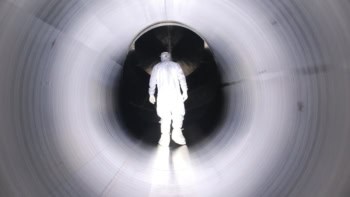A Russian plan to kidnap Niels Bohr in late 1945 has been revealed in top-secret documents released recently by the UK's counter-intelligence service, MI6. The documents confirm the content of telegrams that were sent between the Foreign Office in London and the British envoy in Copenhagen in September 1945.
Bohr had escaped from German-occupied Denmark in September 1943 and crossed the Atlantic to work with British and American physicists on the Manhattan atomic-bomb project at Los Alamos. However, he returned to Copenhagen in August 1945, partly on the advice of his close contact, Sir John Anderson, who was chancellor of the exchequer and political head of the British effort on the bomb project.
It was then that the first report of the Russian plan to kidnap Bohr surfaced. An initial telegram from the Foreign Office on 12 September 1945 says that the report was “low category and unconfirmed”. However, a second telegram sent on 17 September states that the “conversation on which [the] report was founded took place a month ago in a country neighbouring Denmark and [in front of an] official employed by [the] government in question”. According to the telegram, the idea was to get Bohr to Bornholm – the Danish island in the Baltic Sea that the Russians had occupied since the German capitulation after the war in May 1945 – and to abduct him from there with the help of Danish “comrades”.
Bohr was then contacted by the British envoy, who told the Foreign Office that Bohr’s first reaction had been to discount the report on the grounds that nothing would be gained by kidnapping him. “The recent developments in use of atomic energy, ” wrote the envoy, quoting Bohr, “were not so secret as was generally thought…His own part in the discoveries had been modest and his knowledge was incomplete…He did not therefore believe that any responsible Russian with any knowledge of the recent experiments would want to seize his person.” Bohr promised “not to run unnecessary risks or do anything foolish”, and told the envoy that he would not on any account accept an invitation to visit Bornholm.
In the end, no invitation came, but a Soviet physicist – Jakov Petrovich Terletsky – did visit Bohr in Copenhagen in December 1945. The meeting was arranged by the author Martin Andersen Nexø – a Communist who lived in Bornholm – and staged by Lavrentii Beriya, the head of the KGB. At the meeting Bohr managed to satisfy the Soviet authorities by giving them nothing more than “some atomic generalities”.
Niels Bohr’s son Aage, who is also a physicist, confirms that precautions were taken against his father’s kidnapping. “[My father] would have done everything not to be kidnapped and he knew that he should do everything to avoid a trap, ” he said. “He would not dream of letting himself be tempted to give information.”
Finn Aaserud, head of the Niels Bohr archive at the Niels Bohr Institute in Copenhagen, says that it is unlikely that Bohr would have given information about the atom bomb that had not yet been cleared.



